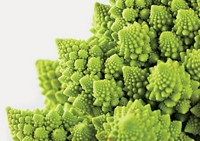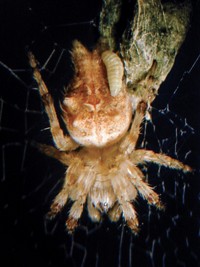Advertisement
Grab your lab coat. Let's get started
Welcome!
Welcome!
Create an account below to get 6 C&EN articles per month, receive newsletters and more - all free.
It seems this is your first time logging in online. Please enter the following information to continue.
As an ACS member you automatically get access to this site. All we need is few more details to create your reading experience.
Not you? Sign in with a different account.
Not you? Sign in with a different account.
ERROR 1
ERROR 1
ERROR 2
ERROR 2
ERROR 2
ERROR 2
ERROR 2
Password and Confirm password must match.
If you have an ACS member number, please enter it here so we can link this account to your membership. (optional)
ERROR 2
ACS values your privacy. By submitting your information, you are gaining access to C&EN and subscribing to our weekly newsletter. We use the information you provide to make your reading experience better, and we will never sell your data to third party members.
Biological Chemistry
Newscripts
Of worms and wine: Newscripts gets the blues
by Sarah Everts
March 27, 2017
| A version of this story appeared in
Volume 95, Issue 13
Blue fluorescence spells death for worms
When it comes to philosophical queries, most people probably wouldn’t turn to a worm for answers. But it turns out that these wriggly nematodes possess glowing insight regarding the age-old question, “What is death?”

“As they die, worms emit a dramatic burst of blue fluorescence,” explains David Gems, who studies aging at University College London. “You can see death moving through the worm. It’s sort of eerie and charming,” he tells Newscripts.
Death can be a tricky event for biologists to quantify, particularly when an organism dies of old age. Scientists aren’t that adept at identifying when and how all the cells in a formerly living body collectively agree that it’s time to shut down permanently. During a stroke, for example, cell death spreads through brain tissues, Gems says, but how death advances through an entire organism is still largely a mystery.
In worms, this death wave begins in the belly of the beast, in a mysterious organelle called the gut granule. “Despite decades of research on the nematode Caenorhabditis elegans, it still contains many hidden secrets,” write Gems and UCL’s Cassandra Coburnin in a paper breathlessly entitled, “The mysterious case of the C. elegans gut granule: Death fluorescence, anthranilic acid, and the kynurenine pathway” (Front. Genet. 2013, DOI: 10.3389/fgene.2013.00151).
These gut granules, which are numerous in the intestinal cells of nematodes, are highly acidic storage containers, chock-full of zinc and a blue fluorescent molecule that Gems’s team identified as a glycosylated anthranilic acid. As the worms die, the gut granules break down, which allows the blue fluorescence to disperse throughout the entire animal.
Why the worm has these gut granules in the first place remains a mystery. Certainly, evolution did not select for these organs to help scientists seeking answers to life’s existential questions. Gems’s research group includes a few colleagues who are digging into the question of how the spread of fluorescence connects to rigor mortis. “We’re doing the blue worm work to understand exactly what happens during death,” Gems says, but answering the innocent question “What do you do?” with “I study rigor mortis in worms” results in some curious reactions from strangers.
Blue wine creator gets a headache

It’s tragically fitting that the glow of death would align with the color commonly associated with sadness. In fact, the Newscripts gang is rather tempted to toast the life and death of lab worms worldwide with a melancholic glass of blue wine, from the Spanish start-up company Gïk. The blue wine could be the beverage of choice for a worm wake, but only if your goal is a miserable morning after: According to a 2016 BBC Travel review, blending white and red grapes with blue pigments—indigo and anthocyanins—the drink’s flavor “is enhanced with non-caloric sweeteners to create a product that is cross between a wine, a wine cooler and a cocktail mixer, with a mellow, sweet, slightly syrupy mouthfeel.”
This blue bastardization of wine comes courtesy of a group of young Spanish entrepreneurs who told the New York Times earlier this month, “None of us really liked normal wine, which comes with too many norms, such as whether you can take it with ice or not.”
The company sold 120,000 bottles around the world until last month, when the European Union dug into its vast reserve of oenological regulations and put an end to the business of calling the blue liquid “wine.”
According to the Times, under the EU’s wine laws, “whatever is not specifically authorized is considered illegal—and blue is not an approved color.” Slapped with a fine but not dissuaded, the company changed the formulation of its alcoholic beverage so that it now contains 1% unfermented pressed grapes. This new recipe ensures the drink is not officially wine and can thus sidestep the traditional beverage’s regulatory headaches.
Sarah Everts wrote this week’s column. Please send comments and suggestions to newscripts@acs.org.





Join the conversation
Contact the reporter
Submit a Letter to the Editor for publication
Engage with us on Twitter